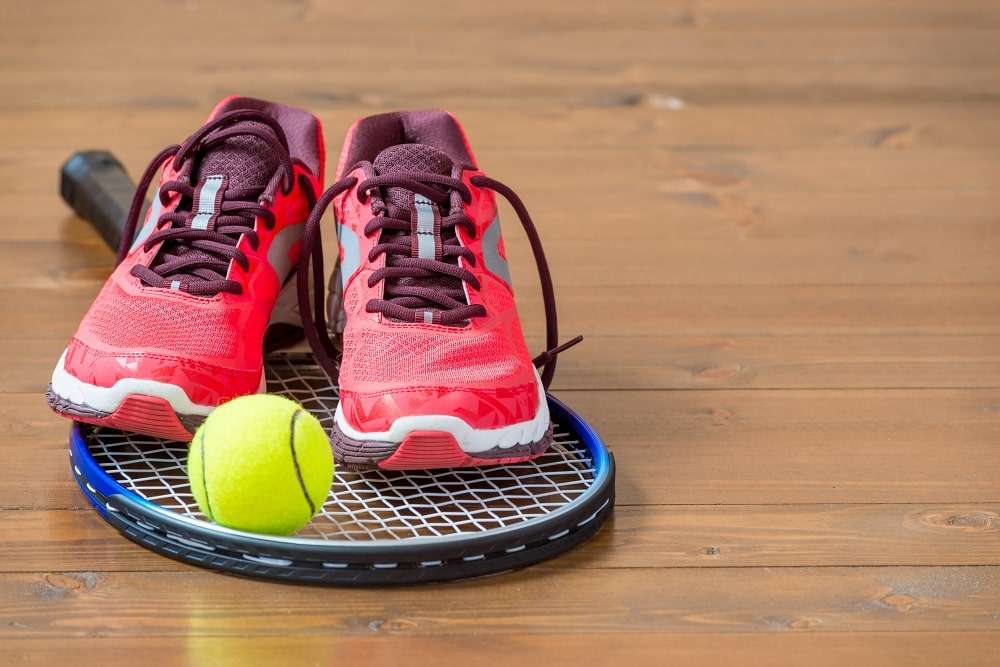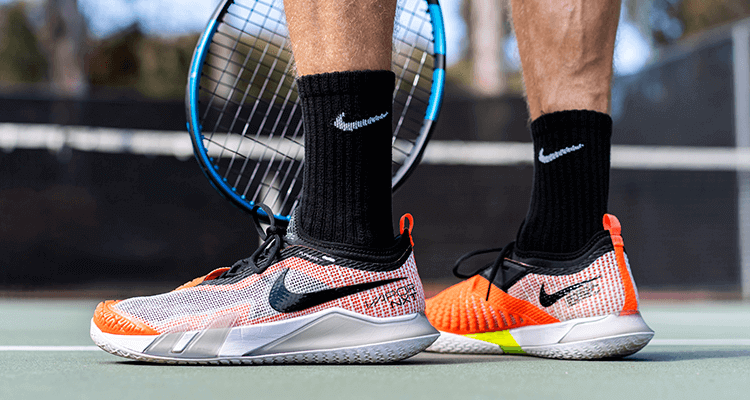You love playing tennis, and you’ve recently started running as a way to improve your fitness. But as you lace up your running shoes for another match on the court, you can’t help but wonder if they are the best choice for playing tennis comfortably. Is it possible to achieve the same level of agility and support in your running shoes as you would in a pair of dedicated tennis shoes? In this article, we’ll explore whether playing tennis comfortably in running shoes is a viable option or if investing in tennis-specific footwear is the way to go.
Can You Play Tennis Comfortably in Running Shoes?
When it comes to playing tennis, having the right footwear is crucial. Tennis involves a lot of lateral movements, quick sprints, and sudden stops, which require specific support and stability that running shoes may not provide. While running shoes are designed for forward motion and cushioning, they lack certain features that are essential for playing tennis comfortably and safely.
Importance of Proper Tennis Footwear
Wearing proper tennis footwear can significantly enhance your performance on the court, reduce the risk of injuries, and provide optimal comfort. Tennis shoes are specifically designed with the sport’s unique movements in mind, ensuring that your feet are supported in all the right areas. Investing in the right tennis shoes will not only protect your feet but also improve your overall game.
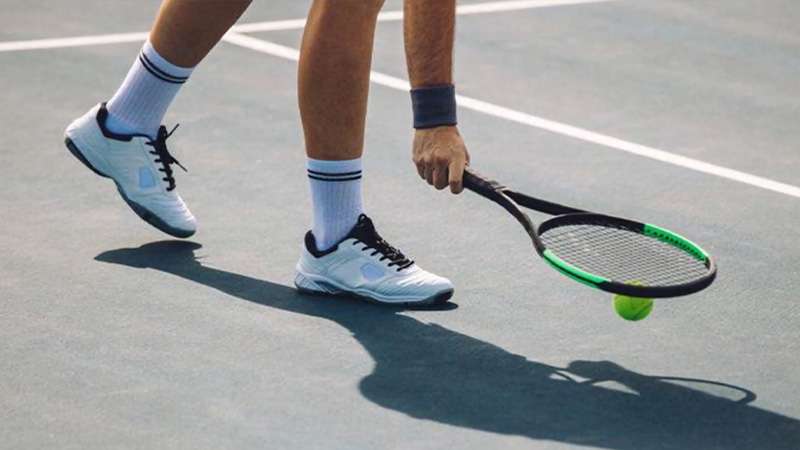
Differences Between Running Shoes and Tennis Shoes
There are several key differences between running shoes and tennis shoes in terms of design and construction. These differences directly affect the functionality and performance of the shoes on the tennis court.
Design and Construction
Running shoes are built to prioritize forward motion and cushioning. They generally have a lightweight design and flexible construction to facilitate smooth heel-to-toe transitions. On the other hand, tennis shoes are designed for lateral movements and quick changes in direction. They often feature a more sturdy construction with increased support in the midsole and outsole.
Outsole
The outsole of a running shoe typically features a continuous rubber pattern to provide traction on various surfaces. While this design is suitable for running on roads and treadmills, it may not offer the necessary grip on the tennis court. Tennis shoes, in contrast, have a modified herringbone pattern on the outsole, which offers excellent traction and grip on the hard court.
Midsole
The midsole is responsible for providing cushioning, support, and stability. Running shoes tend to have thick and soft midsoles to absorb shock and protect the feet from impact while running. Tennis shoes, however, have a more responsive and supportive midsole to assist with lateral movements and sudden stops.
Upper
The upper of a running shoe is often made of lightweight and breathable materials to keep the feet cool during long-distance runs. In contrast, tennis shoes have a more durable upper construction to withstand the demands of the game. They also provide additional support and protection for the feet during lateral movements.
Factors to Consider when Choosing Footwear for Tennis
When selecting footwear for tennis, there are several important factors that you should take into consideration. These factors will ensure that you find shoes that are well-suited to your specific needs and playing style.
Playing Surface
The type of court you primarily play on is an essential factor to consider. Different tennis shoe models are designed specifically for different surfaces, such as hard courts, clay courts, and grass courts. Each surface requires specific traction, stability, and durability, so it’s important to choose shoes that are designed for the surface you play on most.
Foot Type and Pronation
Understanding your foot type and pronation is crucial for finding the right tennis shoes. There are three main foot types: neutral arches, high arches, and flat feet. Additionally, knowing whether you have normal pronation, overpronation, or underpronation will help determine the level of support and stability your shoes need to provide. Selecting shoes that are designed for your specific foot type and pronation will help prevent discomfort and potential injuries.
Fit and Sizing
Proper fit and sizing are paramount in finding comfortable tennis shoes. Ill-fitting shoes can lead to blisters, discomfort, and even injuries. Make sure to measure your feet and try on different options to find the right size. Additionally, consider any specific features or adjustments that may be necessary for your feet, such as wide or narrow widths.
Arch Support
Arch support is important for maintaining the natural alignment of your feet and preventing excessive strain. Flat-footed individuals will benefit from shoes with built-in arch support, while those with high arches may require additional cushioning in the midsole. Assessing your arch type and choosing shoes that cater to your specific needs will help ensure optimal comfort and support.
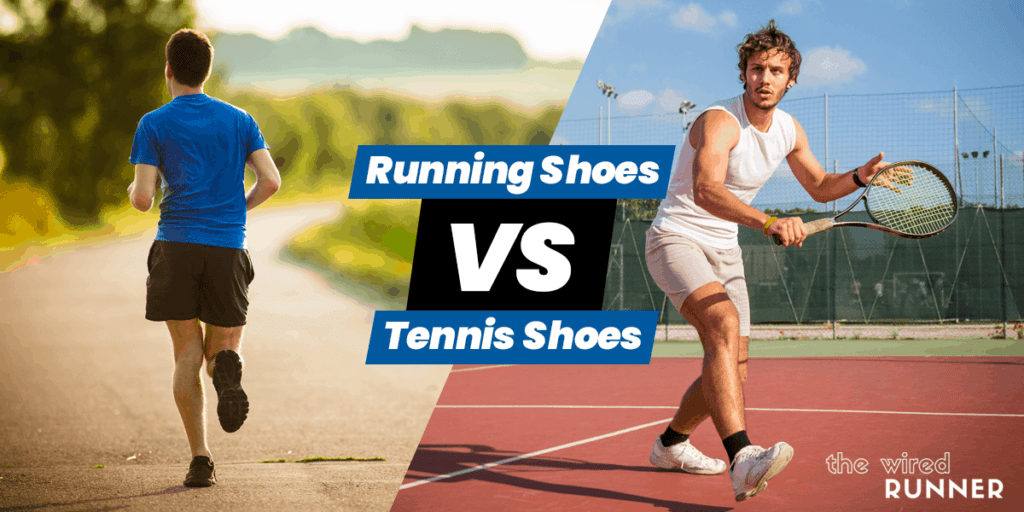
Effects of Playing Tennis in Running Shoes
Playing tennis in running shoes can have several negative effects on your game and overall foot health. While it may seem convenient to use your running shoes for tennis, it’s important to understand the limitations and risks involved.
Lack of Lateral Support
Running shoes lack the necessary lateral support that tennis shoes provide. The quick side-to-side movements in tennis require shoes that can keep your feet stable and prevent excess rolling or twisting. Running shoes simply do not have the stiffness and support required for these lateral movements, increasing the risk of ankle injuries and compromising your agility on the court.
Reduced Stability
Tennis shoes are designed with a wider base to enhance stability during quick turns and stops. Running shoes, on the other hand, have a narrower profile, focusing more on forward motion. This narrower base can lead to instability on the tennis court, affecting your balance and potentially leading to falls or injuries.
Decreased Flexibility
While running shoes prioritize flexibility for a smooth heel-to-toe transition, tennis shoes focus on providing the right amount of flexibility and stiffness for lateral movements. Playing tennis in running shoes can restrict your foot’s natural flexibility, making it harder to change directions quickly and efficiently.
Limited Durability
Running shoes are primarily designed for running on smooth surfaces and are not built to withstand the harsh movements and abrasive nature of the tennis court. The rigorous side-to-side movements and frequent stops in tennis can cause the materials of running shoes to wear out quickly, leading to decreased durability and potential shoe damage.
Comfort and Cushioning
Comfort is essential when it comes to selecting tennis shoes. Proper cushioning and comfort will ensure that you can play for extended periods without discomfort or pain.
Importance of Comfort
Playing tennis in uncomfortable shoes can be a distracting and painful experience, affecting your performance on the court. The right tennis shoes will provide a comfortable fit, preventing any rubbing or pressure points that could lead to blisters or other foot issues.
Cushioning in Running Shoes
Running shoes are designed with generous amounts of cushioning to absorb the impact of each step while providing a smooth ride over long distances. However, the same level of cushioning may not be suitable for the high-impact movements involved in tennis. The excessive cushioning of running shoes can hinder stability and increase the risk of ankle injuries due to the higher center of gravity it creates.
Cushioning in Tennis Shoes
Tennis shoes, on the other hand, offer cushioning that is specifically tailored for the demands of the game. They provide sufficient padding and shock absorption in the midsole to protect your feet during quick stops and lateral movements. The cushioning in tennis shoes strikes a balance between comfort and stability, optimizing your performance and reducing the risk of injuries.
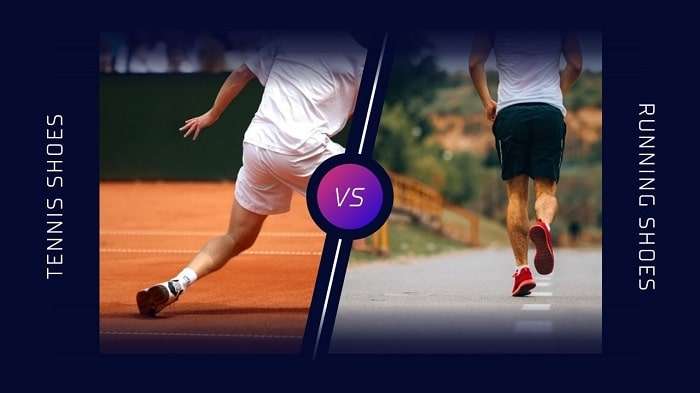
Stability and Durability
Stability and durability are two critical factors to consider when choosing tennis shoes. These features ensure that your feet are well-supported, protected, and that your shoes can withstand the demands of the sport.
Importance of Stability
The high-intensity movements in tennis require shoes that provide stability. Lateral movements, sudden stops, and quick changes in direction necessitate shoes that can keep your feet aligned and prevent excessive rolling or twisting. Proper stability in tennis shoes enhances your balance and helps reduce the risk of ankle injuries.
Durability in Running Shoes
Running shoes are primarily designed to provide comfort and cushioning over long distances. They are not built to withstand the rigorous movements and abrasive nature of the tennis court. If used for tennis, running shoes are likely to experience faster wear and tear, potentially leading to shoe damage and compromising their overall durability.
Durability in Tennis Shoes
Tennis shoes are specifically engineered to withstand the demands of the sport. They feature durable materials, reinforced toe caps, and sturdy outsoles to provide longevity and protection. Investing in a pair of tennis shoes ensures that you have footwear that can withstand the fast-paced movements and long hours on the court.
Traction and Grip
Traction and grip are essential for maintaining balance, preventing slips, and facilitating quick movements on the tennis court. The right shoes will greatly enhance your ability to maneuver and perform at your best.
Importance of Traction and Grip
The tennis court surface can be slippery, especially during intense matches or when playing on wet grass or clay. Proper traction and grip are crucial for maintaining stability and executing precise movements. Without sufficient traction, you may struggle to stop quickly, change directions effectively, or maintain your footing during explosive sprints.
Traction in Running Shoes
Running shoes typically have outsoles with a continuous rubber pattern that is optimized for traction on roads, treadmills, and other even surfaces. While this design provides good grip for forward motion, it may not offer the necessary traction for the lateral movements required in tennis. Running shoes may slip or slide on the tennis court, compromising your performance and potentially leading to injuries.
Traction in Tennis Shoes
Tennis shoes feature outsoles with a modified herringbone pattern specifically designed for providing excellent traction on hard courts. The multidirectional tread pattern offers enhanced grip, allowing you to quickly stop, start, and change directions with ease. The superior traction of tennis shoes ensures that you can confidently move around the court and make sharp turns without the fear of slipping.
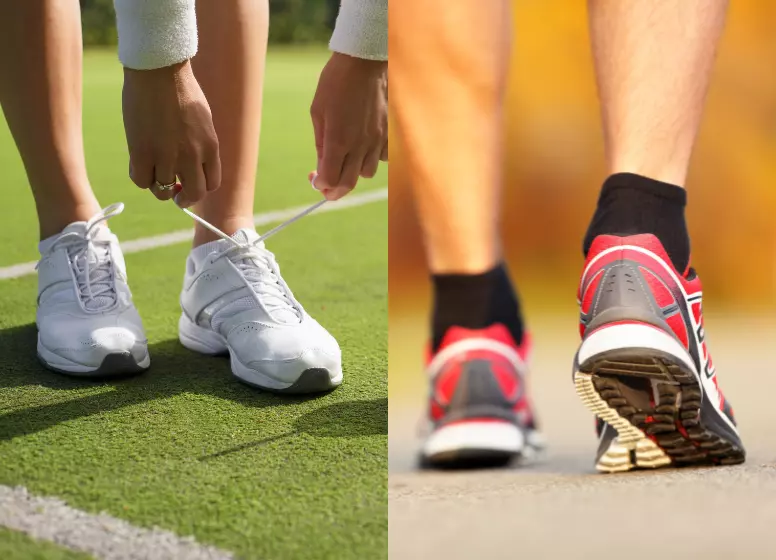
Risk of Injury
Playing tennis in running shoes can increase the risk of various injuries, especially those related to the lack of lateral support, stability, and traction.
Ankle Injuries
Running shoes lack the lateral support needed to prevent excessive rolling or twisting of the ankle during quick side-to-side movements in tennis. This can leave you vulnerable to sprains and other ankle injuries.
Knee Injuries
The reduced stability and limited lateral support in running shoes can also negatively impact your knees. The constant changing of directions and sudden stops in tennis can place excessive stress on the knee joints, increasing the risk of injuries such as tendonitis and ligament tears.
Foot Injuries
Running shoes are not designed to withstand the high-impact movements and abrasive nature of the tennis court. Playing tennis in running shoes can lead to foot injuries such as blisters, plantar fasciitis, and stress fractures due to insufficient cushioning, stability, and support.
Can Running Shoes Be Used for Tennis?
While it is technically possible to play tennis in running shoes, it is not recommended. The differences in design, functionality, and performance between running shoes and tennis shoes make the latter a superior choice for the sport.
Considerations for Using Running Shoes
If you find yourself in a situation where you have no other option but running shoes for a game of tennis, there are a few considerations to keep in mind. First, be aware of the increased risk of injuries due to the lack of lateral support, stability, and traction. Also, adjust your playing style accordingly to minimize the strain on your feet and ankles.
Potential Problems and Risks
Using running shoes for tennis may lead to various problems and risks. Apart from the increased risk of injuries, playing in running shoes can negatively affect your performance due to reduced stability, limited durability, and compromised flexibility. Additionally, running shoes may wear out quickly, leading to additional costs and the need for frequent replacement.
In conclusion, while running shoes may be great for running, they are not suitable for playing tennis comfortably and safely. Proper tennis shoes are specifically designed to provide the support, stability, traction, and durability necessary for the fast-paced movements and demands of the sport. Investing in a pair of tennis shoes will not only enhance your performance on the court but also protect your feet from potential injuries. So, leave your running shoes for your runs and grab a pair of tennis shoes to fully enjoy the game.
